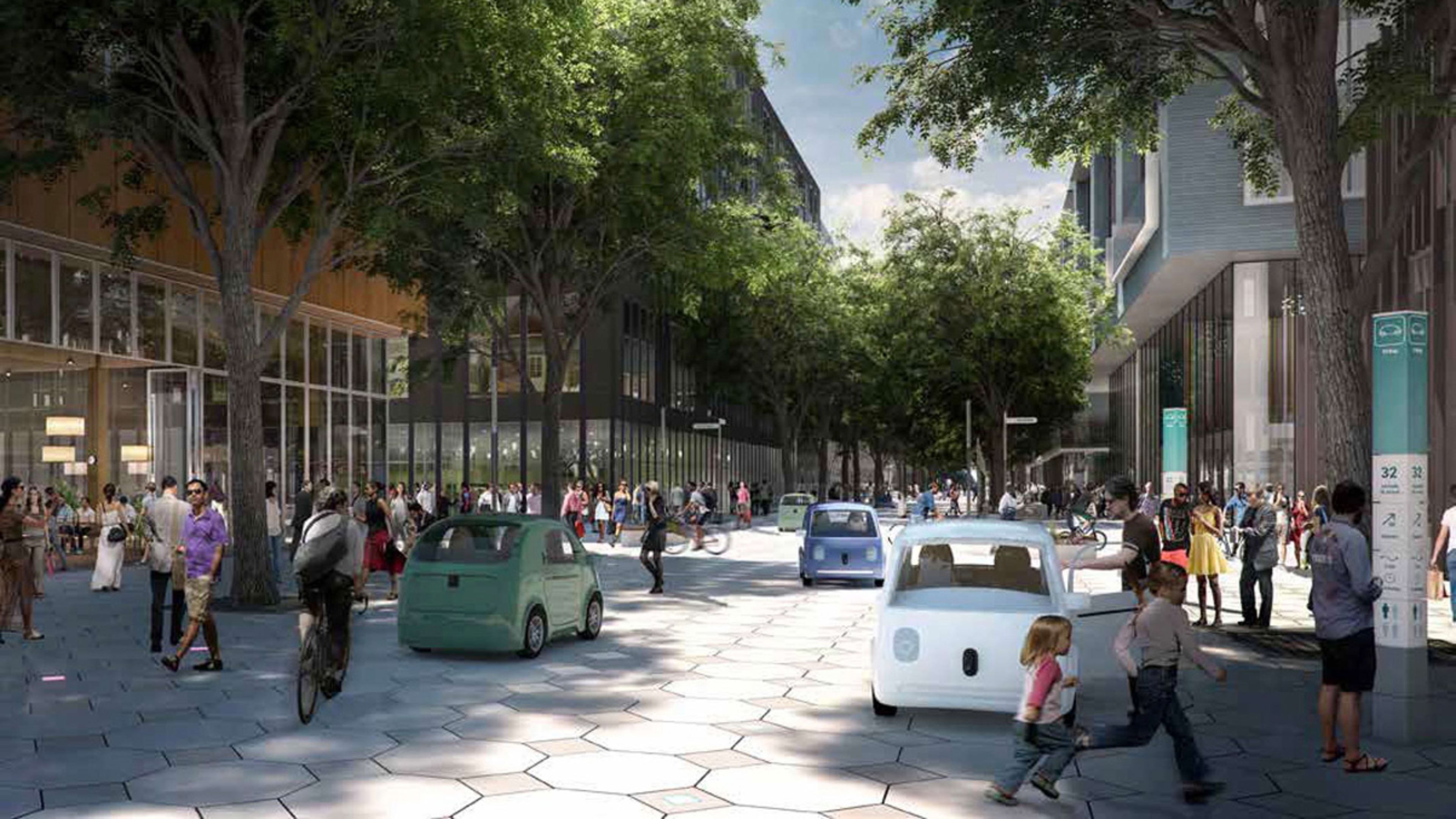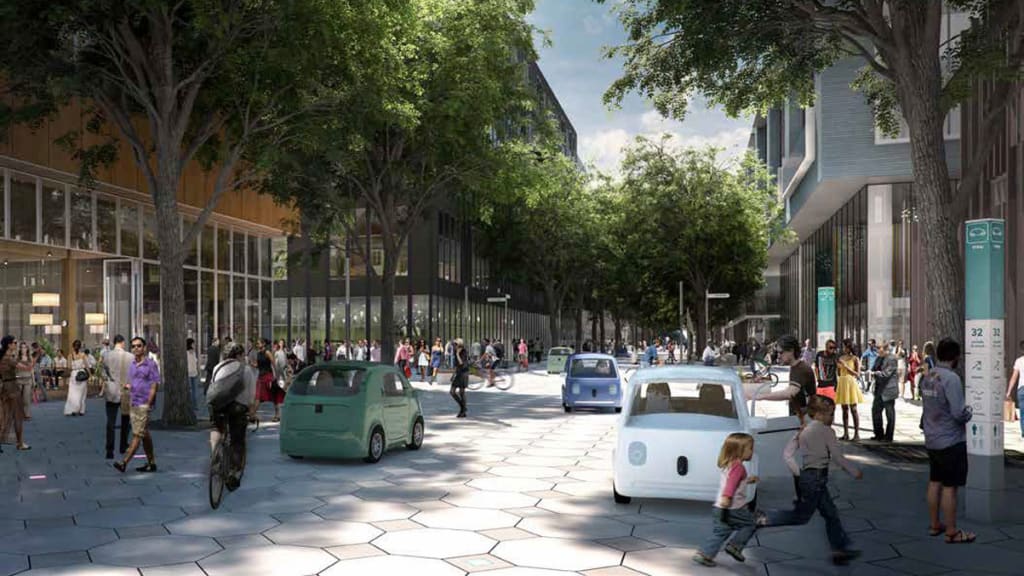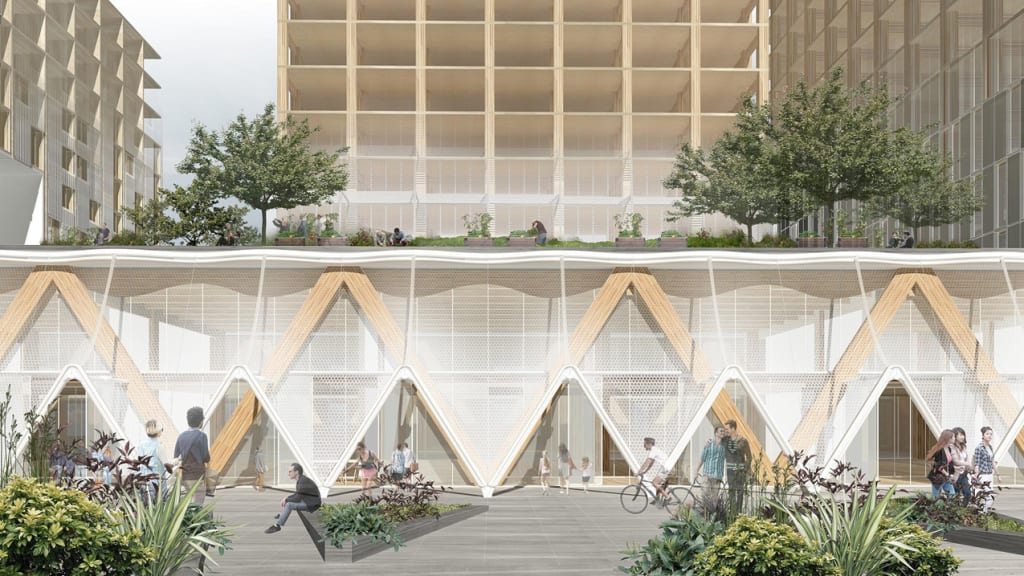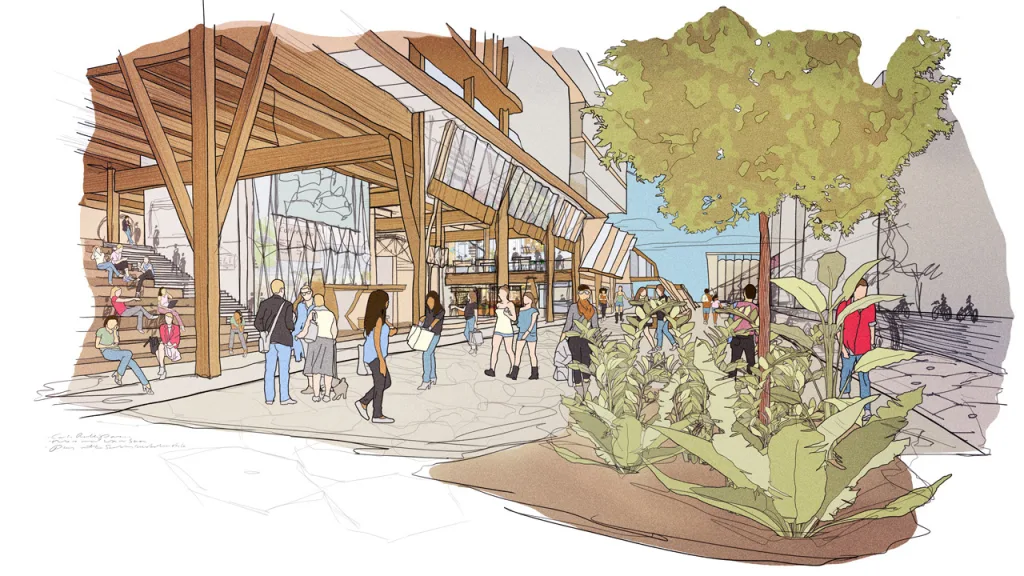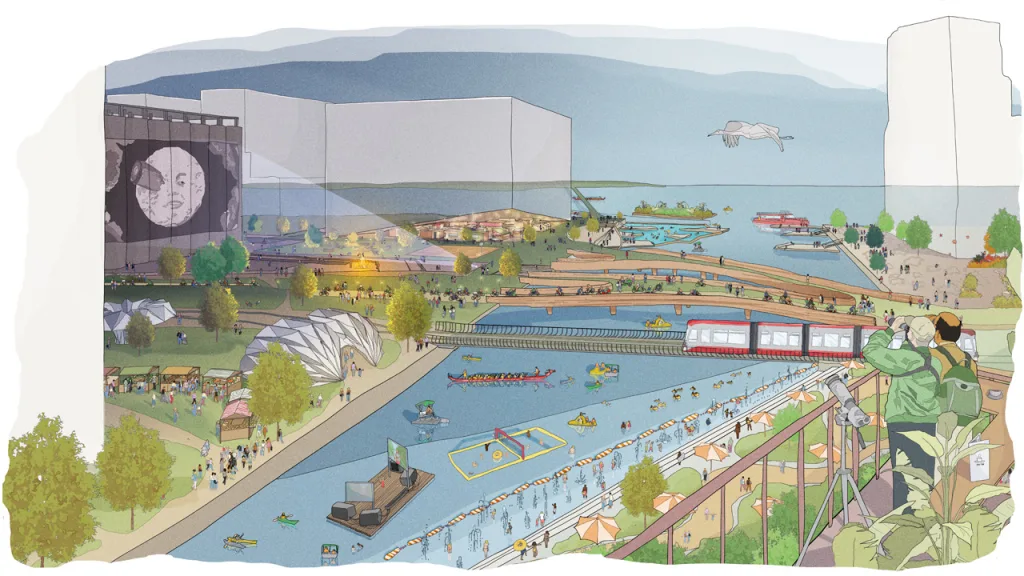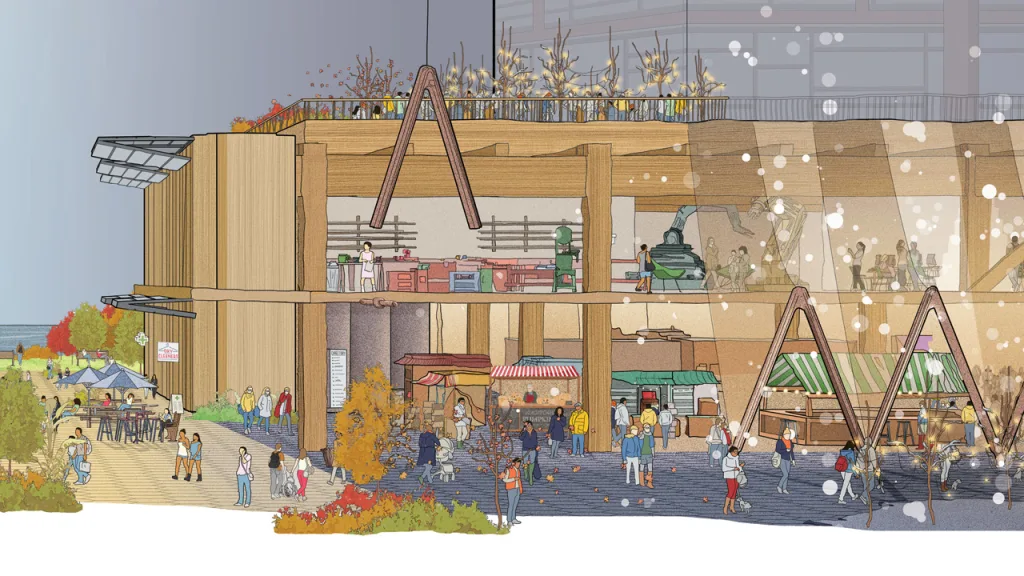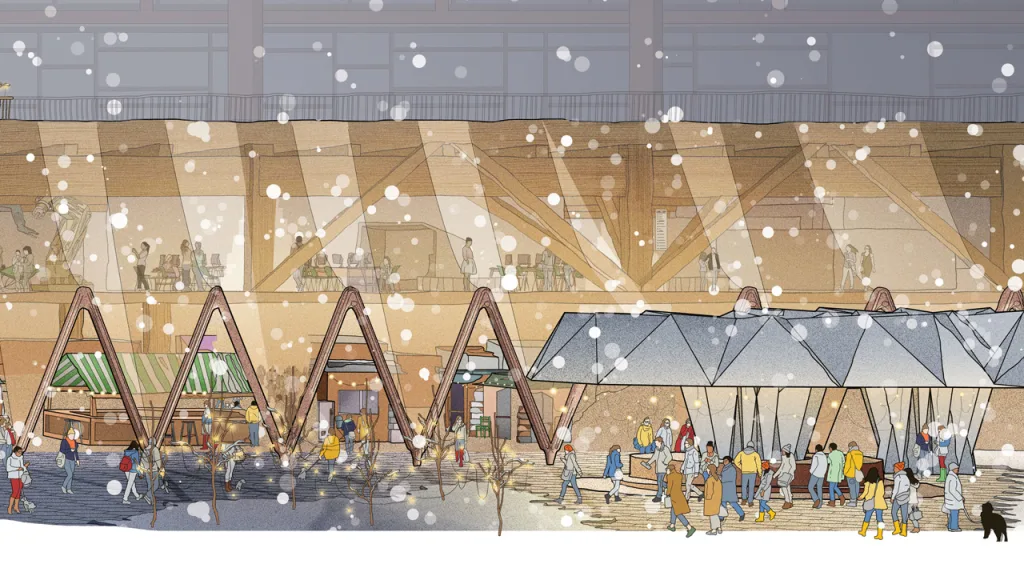Alphabet’s Sidewalk Labs and Waterfront Toronto—the entity formed by Canada, Ontario, and the city of Toronto—have shared an early peek of design plans for Sidewalk Toronto, the much-hyped waterfront revitalization project that’s been touted as “the world’s first neighborhood built from the internet up.”
Unveiled this week at a roundtable for community feedback, a set of rendered sketches show what Sidewalk Toronto “could look like.” A landscape of high-rise timber structures—a sustainable alternative to the ubiquitous glass-and-steel tower—feature heavily in an area dense with recreational amenities, housing, offices, commercial storefronts, and plenty of public space. A network of smart city pavement is envisioned as a series of precast slab tiles, designed for flexibility. The modular arrangement would allow for faster maintenance and repair and also allow for varying seasonal arrangements. In the winter months, the concrete tiles would also conduct heat to melt snow and ice, and even contain LED lights to indicate changes in road use throughout the day.

Real-world weather data analyses, meanwhile, would help determine when to optimize indoor and outdoor spaces–and the ground floors of buildings would be dedicated to a “porous, flexible program” that Sidewalk Labs says is modeled after the ancient Greek stoa, a public covered walkway used for markets and gatherings. Made from prefabricated components, the modern-day stoa could be flexibly reconfigured around different uses as needed.

It’s not hard to be seduced by the project’s promise of a high-tech utopia where optimization, automation, and renewable energy are king. Announced last October as a mixed-use revitalization project for Quayside, an unused plot of industrial dockland across the railway from Downtown Toronto, the smart district would be developed from scratch, and much has been hypothesized about the possibilities that could be opened up by a ground-up, tech-driven infrastructure.
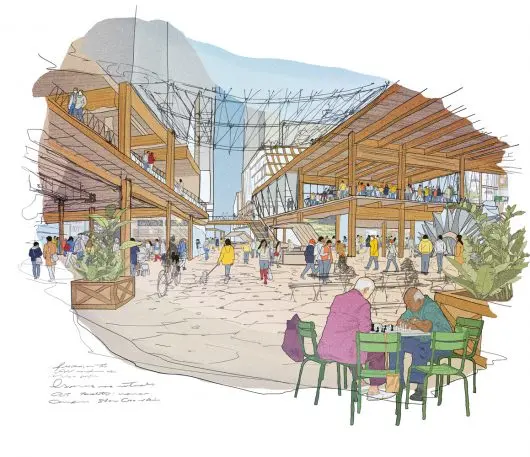
The public unveiling of the plan is part of a calendar of meetings and roundtables, the next of which will take place in November. As the process progresses, some locals and critics have expressed unease about the data privacy of residents (Sidewalk noted that it is using the Privacy by Design standard as it plans the project). The infrastructure of any “smart” city landscape would surely operate upon the collection of data, through sensors and surveillance tools, necessary to manage and track traffic flows and user behavior–all of which have flagged cybersecurity concerns for data storage and privacy.
The motivating myth that technology can solve all of our problems may simply not have as much lasting power in 2018. In the fallout of Facebook and Cambridge Analytica’s massive data breach, revealed earlier this year, concerns over what user data will be stored and collected—and how, exactly, it will be implemented in the city’s new, fully wired neighborhood that promises to run itself—is top of mind for many residents, as Sidewalk and Toronto press on their aggressive schedule to break ground by 2020.
Recognize your brand’s excellence by applying to this year’s Brands That Matter Awards before the early-rate deadline, May 3.
